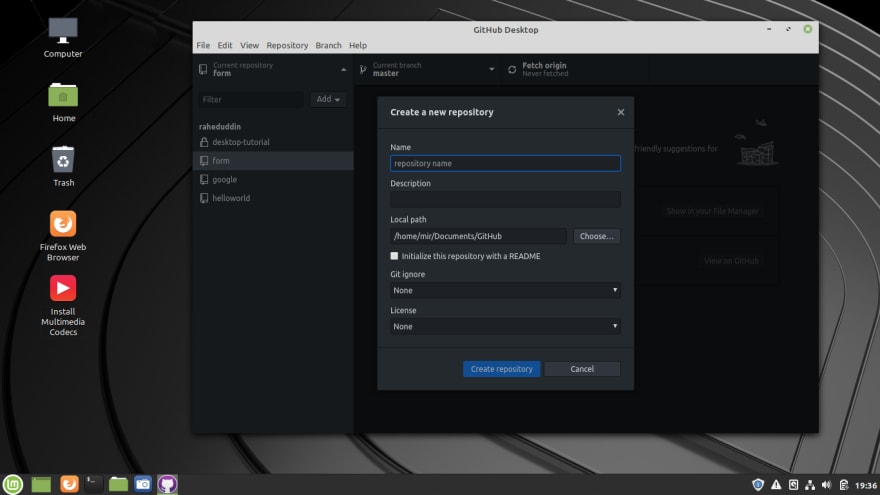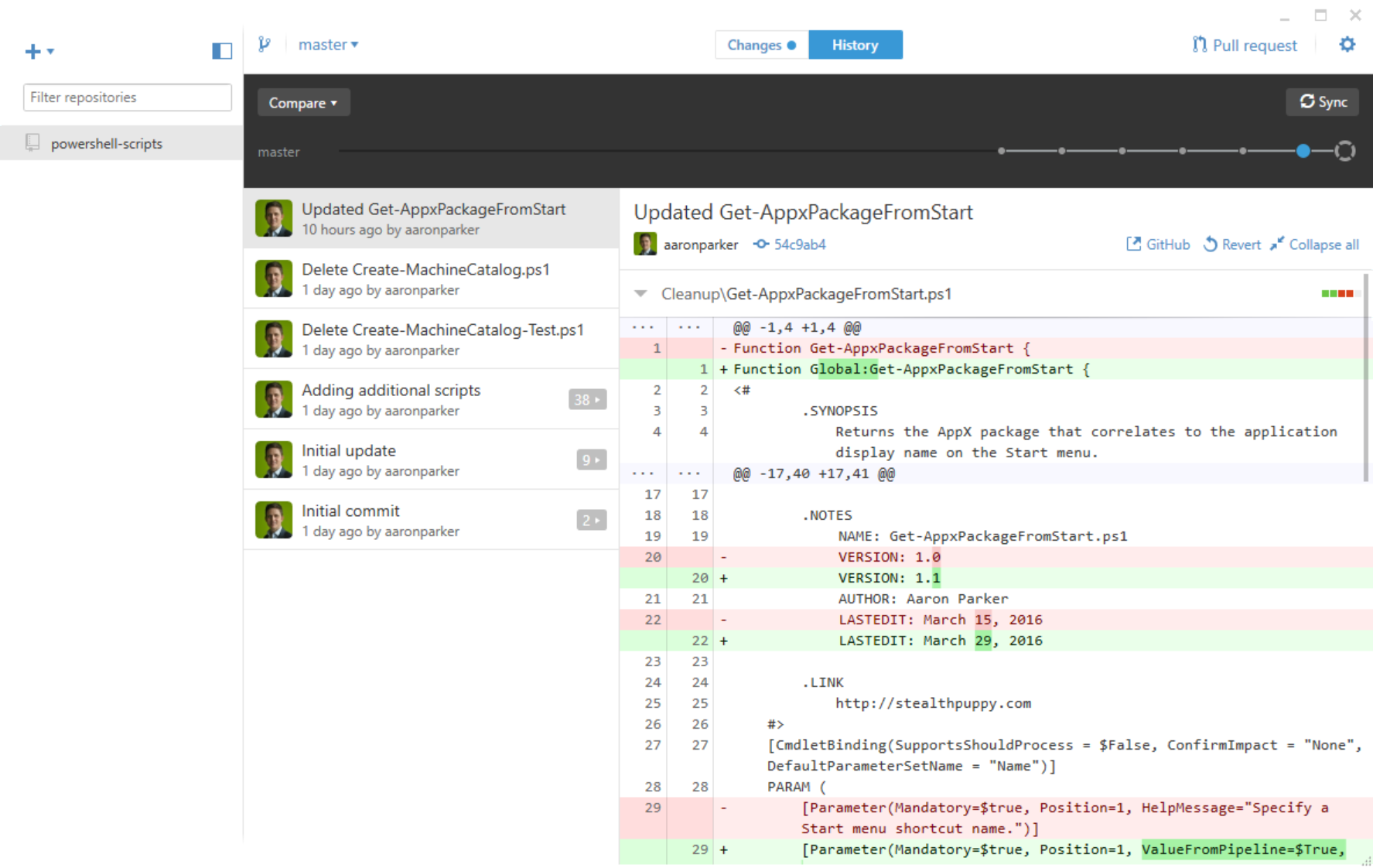

- Github desktop install how to#
- Github desktop install install#
- Github desktop install code#
- Github desktop install download#
To make things running in the command line, first of all, you will have to download the following version of Git on your PC.

Just click on Authorize GitHub, and you'll redirect towards the desktop version of the app.Īfter you've logged in, you can do all of your operations without much hassle. Now you can perform all of your Git operations without any problems at all.

Open GitHub from the download folder and sign in using the account you made initially. Once you've downloaded the desktop app, it's time to set up GitHub Desktop. Just visit and click one that big purple button that you can see in the screenshot below. You can also read to upload your local project to GitHub using command Line Method A: Download GitHub Desktop Or, if you're learning CMD, you will find this method to be quite useful overall.
Github desktop install install#
Moreover, if you're already working in a CMD environment, you don't need to install a desktop version.
Github desktop install code#
Merge and Deploy: You can merge and deploy code right from the app by sending it to the master branch.Ĭollaboration Tool: Collaboration is made easy. You can select current branches or create a new one. Here are some of the features that you get by using the desktop version: New & Updated GitHub Desktop Featuresīranch off: It allows you to change and review your code on GitHub right within the app.
Github desktop install how to#
In this article, we will teach you how to download the GitHub Desktop. It will make the whole workflow faster, easier, and credible. If you're the type of person who doesn't want to rely on the web browser, GitHub Desktop is spot on for you. The gist of this is message transfer 'file' not allowed.GitHub Desktop allows you to have complete control over GitHub from the easy access of your desktop. Nie można sklonować „app/static/common/” drugi raz, przerywanie

Klonowanie do „/home/slawomie/.cache/paru/clone/github-desktop/src/github-desktop/app/static/common/”.įatal: klonowanie „/home/slawomie/.cache/paru/clone/github-desktop/src/” do ścieżki podmodułu „/home/slawomie/.cache/paru/clone/github-desktop/src/github-desktop/app/static/common/” nie powiodło się Klonowanie do „/home/slawomie/.cache/paru/clone/github-desktop/src/github-desktop/gemoji”.įatal: klonowanie „/home/slawomie/.cache/paru/clone/github-desktop/src/gemoji” do ścieżki podmodułu „/home/slawomie/.cache/paru/clone/github-desktop/src/github-desktop/gemoji” nie powiodło się Nie można sklonować „app/static/common/gitignore”. Klonowanie do „/home/slawomie/.cache/paru/clone/github-desktop/src/github-desktop/app/static/common/gitignore”.įatal: klonowanie „/home/slawomie/.cache/paru/clone/github-desktop/src/gitignore” do ścieżki podmodułu „/home/slawomie/.cache/paru/clone/github-desktop/src/github-desktop/app/static/common/gitignore” nie powiodło się Nie można sklonować „app/static/common/”. „/home/slawomie/.cache/paru/clone/github-desktop/src/github-desktop/app/static/common/” nie powiodło się Klonowanie do „/home/slawomie/.cache/paru/clone/github-desktop/src/github-ĭesktop/app/static/common/”.įatal: klonowanie „/home/slawomie/.cache/paru/clone/github-desktop/src/” do ścieżki podmodułu Zarejestrowano podmoduł „gemoji” () w „gemoji” Zarejestrowano podmoduł „app/static/common/gitignore” Zarejestrowano podmoduł „app/static/common/”


 0 kommentar(er)
0 kommentar(er)
